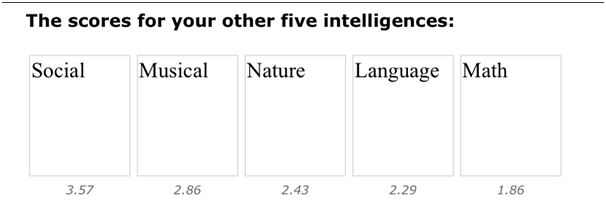Psychology assignment on big five traits and self reflection using Gardner's multiple intelligence
Question
Task: Can youu reflect upon your big five traitsusing Gardner's multiple intelligence in thispsychology assignment?
Answer
Introduction
This psychology assignmentfocuses on the big traits possessed by an individual. Further, this study focuses on the five intelligences possessed by an individual, with a special focus on Gardner's multiple intelligence. Finally, the results are used to determine the career path and job activities undertaken.
Psychology assignment on the big five traits
The five big traits include “openness, conscientiousness, extraversion, agreeableness and neuroticism.” Openness refers to the ability to think appropriately in complex situations (Ali, 2019). A score of 62.5% being moderately high shows that I am creative, adventurous and intellectual. Further conscientiousness refers to the ability to be self-disciplined and self-controlled (Jach & Smillie, 2021). A score of 58% in this psychology assignmentshows that I am able to manage self-discipline, and I am organised and determined in the activities I undertake. Moreover, extraversion refers to the ability to mix with the people around. An extroverted person often seeks attention from the people around while an introverted person prefers to stay by themselves (Ali, 2019). A score of 81% shows that I am highly extroverted and can easily mix with the people around me.
Agreeableness in this psychology assignmentrefers to the ability to prioritise others’ needs and work in coordination rather than competition (Jach & Smillie, 2021). A score of 71% shows that I am highly agreeable to the needs of others and like to work in coordination with others. Neuroticism in ths psychology assignmentrefers to the ability to react to adverse situations with emotions, guilt, fear, and sadness (Ali, 2019). A score of 58% shows that I am moderately neurotic when I can balance my emotions and move forward to the next work.
Thus the results of the big five traits satisfied me as I observed that I possess all these traits.The results were according to my expectation, and there was no deviation in the results from the traits I possess.
Explain the Gardner's multiple intelligence
Gardner's multiple intelligence states that humans possess different types of intelligence according to which their ability should be measured. Gardner's multiple intelligence includes "visual-spatial intelligence, linguistic-verbal intelligence, logical-mathematical intelligence, bodily-kinesthetic intelligence, musical intelligence, interpersonal intelligence, intrapersonal intelligence, naturalistic intelligence" (Ahmad & Dzulkarnain, 2020).
The intelligence resulted in a score of 4.29 out of 5 on self. The psychology assignment shows that I am able to work on my own through trial and error. I prefer to enhance my sense of self through readings and by reflecting on the new ideas learnt from the books and journals.
Further, a score of 3.86 out of 5 on the body movements shows that I prefer to take part in active sports. Active sports include swimming and walking while engaging in a conversation (Mahmood, Raheem & Nehal, 2022). This, in turn, shows that I prefer to be involved in activities rather than sitting idle. On the other hand, a score of 3.71 out of 5 on spatial intelligence shows that I have the ability to remember things through visualisation. Spatial intelligence is the ability to remember the specifications of the things I visualise, namely the shapes, size colours of the things (Sener & Çokçaliskan, 2018). Moreover, my social intelligence scores a 3.57 in the psychology assignmentimplying that I have the ability to socialise and mix with the people around me with ease. However, my musical intelligence with a score of 2.86, nature intelligence with a score of 2.43, language intelligence with a score of 2.29 and mathematical intelligence with a score of 1.86 shows in this psychology assignmentthat I am weak in these intelligence compared to the formerly mentioned intelligence.
The results of the psychology assignmentwere satisfactory according to my expectations thus enabling me to rely on the results for further improvement.
Analysis of the results
The results derived in the psychology assignmentsuggest that I should undertake a job role that includes interacting with individuals to teach and learn from them. Furthermore, my spatial intelligence will help me in my professional developemt.According to the results derived above, I will choose a career that will include interacting with different individuals in day-to-day activities. I will choose the job of training individuals in an organisation where I will be able to interact with new individuals every day. Further, with openness, conscientiousness, agreeableness and extraversion, I will be able to justify my job role. Moreover, I will be able to maintain self-discipline and train the individuals through body movements. I will choose to walk around the training room and discuss the needs of the trainees individually. Further, effective spatial intelligence helps to remember and identify the trainees by their names and identity (Sener & Çokçaliskan, 2018). This will make them attentive and feel important in the training session.
The other life goals will include excelling in the profession and achieving a senior position in the system of operation over the years. The traits and intelligence possessed by me will help me to suit the purpose of the job, thereby excelling over the years. Through the interactions with the trainees, a trainer is able to improve the traits and intelligence (Mahmood, Raheem & Nehal, 2022). These aspects will help me achieve professional goals and achieve success in the process.
Conclusion
In the above psychology assignment, it can be concluded that the big traits and intelligence factors play an important role in framing the career of an individual.
Further, I have considered the traits and intelligence to determine a career of choice. This, in turn,will help me to excel in the profession and achieve success in the process.The current life plan will include enhncing my knowledge by Attaining seminars, Ted talks and others.
The test results mentioned in the psychology assignmenthas helped me to understand the traits and intelligences in depth and I was overwhelmed to observe that they matched my beliefs of traits and intelligence.
Thus, I will use the report to choose my career path and achieve success in the professional sphere.
References
Ahmad, N. N., & Dzulkarnain, S. S. (2020). Utilisation of Gardner's Multiple Intelligence Theory in the Psychology Assignmentfor School Counselling System with Usability Testing. International Journal of Recent Technology and Engineering (IJRTE) ISSN, 2277-3878. https://www.researchgate.net/profile/Nik-Azlina-Nik-Ahmad/publication/346716136_Utilization_of_Gardner's_Multiple_Intelligence_Theory_in_School_Counselling_System/links/5fcf4f7e45851568d149cdfb/Utilization-of-Gardners-Multiple-Intelligence-Theory-in-School-Counselling-System.pdf
Ali, I. (2019). Personality traits, individual innovativeness and satisfaction with life. Journal of Innovation & Knowledge, 4(1), 38-46. https://reader.elsevier.com/reader/sd/pii/S2444569X18300167token=77C2394FDD0EA99F66C3893621DFCFC435EC782F8C62511F213ADEA5606734E80E38E64AA12039C03DC89372D9924853&originRegion=eu-west-1&originCreation=20220628062157
Jach, H. K., & Smillie, L. D. (2021). Testing the informationseeking theory of openness/intellect. European Journal of Personality, 35(1), 103-119. https://journals.sagepub.com/doi/pdf/10.1002/per.2271
Mahmood, M. D., Raheem, B. R., & Nehal, R. (2022). Developing Multiple Intelligences through Different Learning Styles: An Integrated Approach to Learner-centered Pedagogy. Journal La Edusci, 3(1), 13-17. http://www.newinera.com/index.php/JournalLaEdusci/article/view/634/498
Sener, S., & Çokçaliskan, A. (2018). An investigation between multiple intelligences and learning styles in the form of psychology assignment. Journal of Education and Training Studies, 6(2), 125-132. https://files.eric.ed.gov/fulltext/EJ1170867.pdf
Appendix
Appendix 1
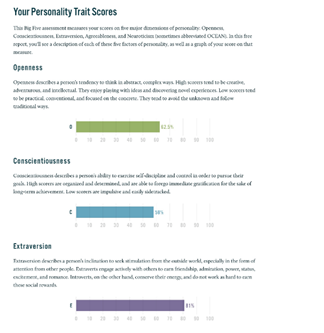
Appendix 2
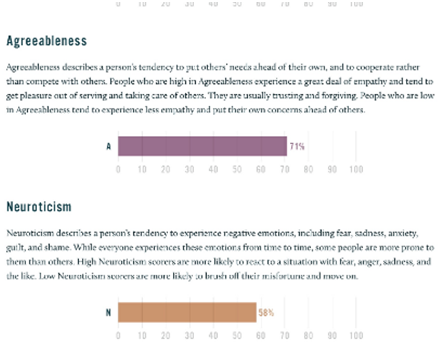
Appendix 3
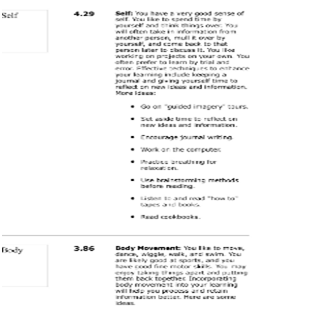
Appendix 4
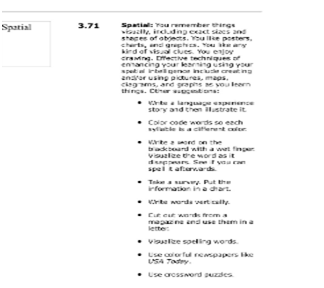
Appendix 5
